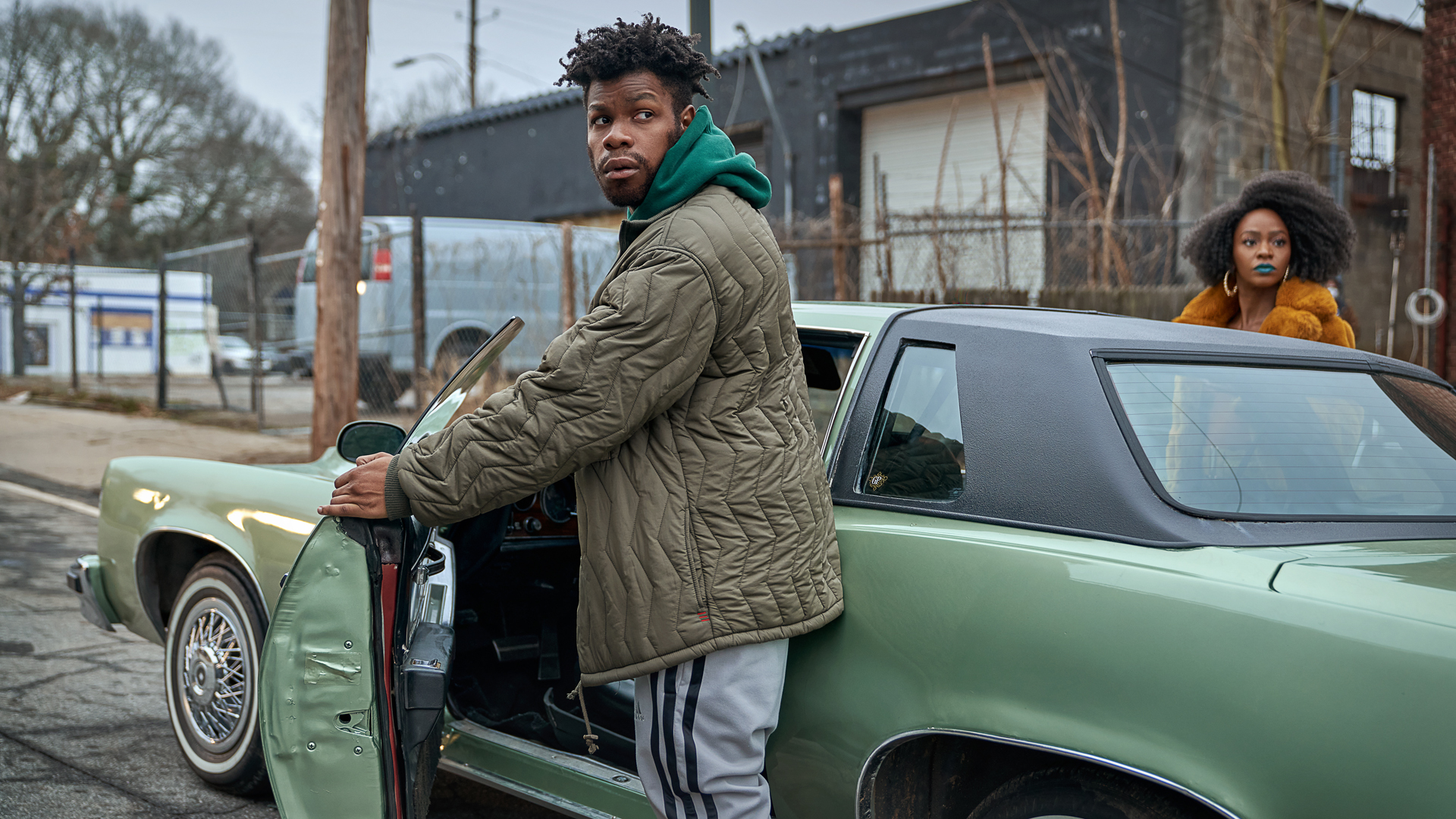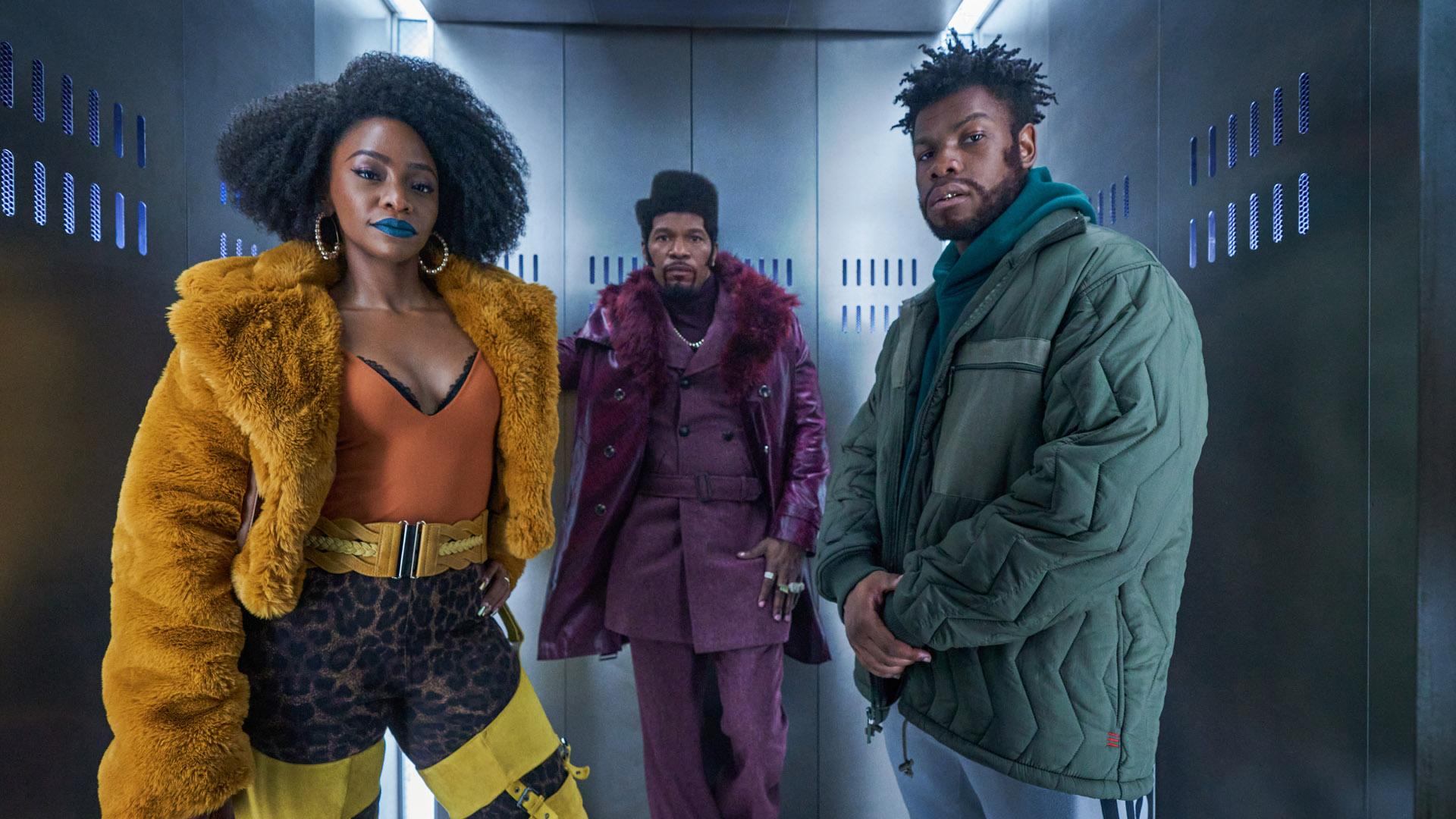
Editor's note: this interview took place prior to the actors' strike, which began on July 14.
They Cloned Tyrone star John Boyega has revealed that the Netflix film's ending is intentionally left open to viewer interpretation.
Speaking exclusively to TechRadar ahead of the movie's July 21 launch, Boyega explained that the genre-bending flick's final scene is meant to prompt a debate among viewers about what's real and what isn't.
Full spoilers follow for They Cloned Tyrone on Netflix. You have been warned.

In the new Netflix movie's final moments, we appear to encounter another clone of Fontaine, the character Boyega plays. Fontaine wakes up and joins his roommates in their lounge, where a news report concerning events in the Glen is playing on the TV.
The group starts making jokes and comments about what's going on. But, when the camera pans around to reveal one of Fontaine's clones – looking confused as he wanders around the street – a deathly silence falls across the group. They turn towards the character Boyega is playing in this scene before one of them asks: "Is that you, Tyrone?". The camera slowly focuses up on a shocked Tyrone before the screen cuts to black.
Unsurprisingly, viewers will have questions about what this scene means. Is every version of Fontaine, created by government scientists in their labs beneath the Glen, actually clones of Tyrone? If so, why doesn't Tyrone remember being experimented on? Or, in fact, is Tyrone just a California-based clone of the original Fontaine? If the latter is true, how will Fontaine react when he realizes that the government's cloning tests are more widespread than he thought?
Of course, none of these questions are answered before the credits roll. So, I went straight to the source – Boyega – for an explanation.

Asked if They Cloned Tyrone's ending was meant to be intentionally vague, Boyega told me: "To a certain extent, yeah. It gives you the opportunity to discuss the world you've just watched and then the potential of an expansion into other US states.
"For me, it also represented how big the whole system was in our unique universe. How many more labs are out there? How extensive is this operation? It embodies that for me. Also, the artistic potential for me to explore how many Fontaines or Tyrones are out there is really cool and funny."
Boyega doesn't just play Fontaine and Tyrone in the flick, which we consider one of the best Netflix movies of recent times, either. The Star Wars actor also portrays an older version of Fontaine – who we think is the real Fontaine until the ending – as well as a more physically powerful clone of Fontaine, called Chester, who acts as the real Fontaine's security. Oh, and let's not forget the fifth iteration of Fontaine, i.e. the one that's liberated from the lab and who Tyrone and his crew see on TV at the end of the film.
The artistic potential for me to explore how many Fontaines or Tyrones are out there is really cool
John Boyega
For Boyega, getting the chance to play five wildly different iterations of the same character was creatively fulfilling – and something he never expected to happen during his career.
"It felt like being a big kid in a candy store," he told me. "It was fun and enjoyable to be given so much in one film. All the different versions – whether it was Fontaine, Tyrone, or Chester – were all given their unique narratives, perspectives, body language [and] vernacular to make them distinct. That was pre-planted in the script, so I felt excited to dive into five roles in the same film.
"To have them all in one space was really challenging, but it's one you definitely enjoy. You're just exploring your own versatility in that sense. I was very lucky to be supported by Juel, who had his vision for each character. It was through that collaboration that we found little nuances and character traits to play off each other."
For more exclusive coverage surrounding They Cloned Tyrone, read my exclusive chat with Boyega about how They Cloned Tyrone breaks every genre rule in the best possible. Additionally, read up on why Boyega isn't fully closing the door on his time in the Star Wars universe.







